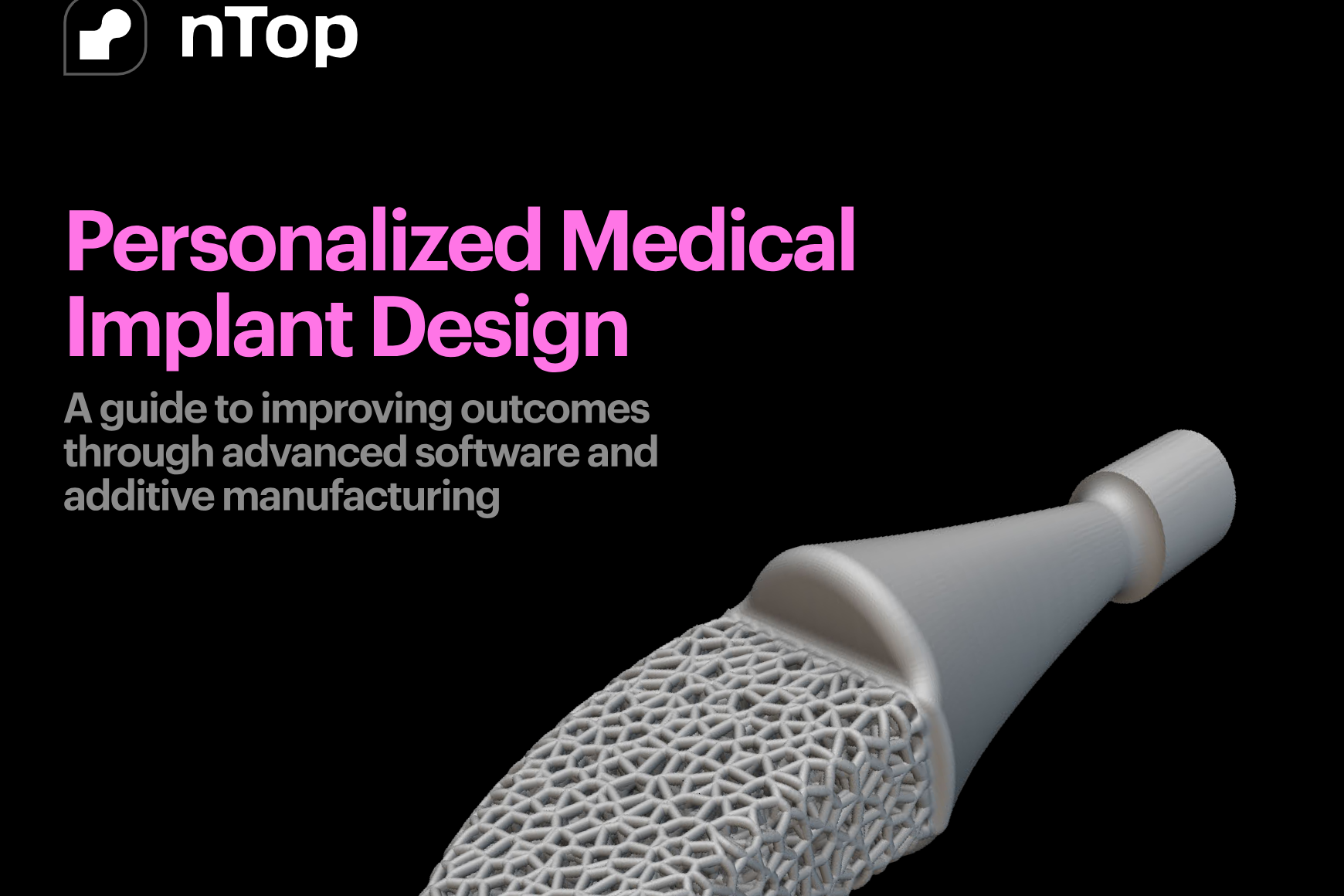Developing 3D printed prosthetics for animals with nTop

Written by DiveDesign
Published on November 12, 2020
With the reusable workflows in nTop and FDM 3D printing, industrial designers are able to rapidly iterate and prototype the design of functional parts. This blog highlights a use case for animal prosthetics and points to how this can be done in other cases such as designing a foot for an amputee so they can rock climb.
Industrial design is an incredible discipline combining the perspectives of art, engineering, business, and even science all in one. It is these perspectives that any product requires to be successful. If a product does not look good, it will not sell. If the product doesn’t function well, it will not sell. If a product does not solve a specific problem at the right cost, it will not sell. It is the role of the industrial designer to balance these elements in the conceptualization and execution of a new product, for the purpose of developing a product that meets the requirements beyond just the needs of a user.
At DiveDesign, we develop products with the holistic approach of an industrial designer at the forefront, with an emphasis on leveraging the latest in technologies to bring our clients even further, faster. It’s this methodology that reshapes industries as so much must be taken into account to change perceptions and enable change.
In our constant pursuit of the latest and greatest, we’ve begun incorporating nTop into our workflows. Especially for the purpose of designing end-use 3D printed parts for applications that do not require mass manufacturing, but smaller-scale production that was previously inaccessible to most. With the rise of additive manufacturing, low run production of highly useable parts at an affordable cost is finally possible. There is a huge window of opportunity for parts that could not be made previously as minimum order quantities required for production were simply too high, or the parts were too complex for conventional processes. Our work with Bionic Pets is a great example of this.
Bionic Pets is a leader in custom animal prosthetics for animals of all kinds, especially dogs. Their founder Derrick Campana has worked on animals ranging from elephants to birds and everything in-between. However, everything they make is done entirely by hand through Derrick’s incredibly skilled craftsmanship. While this works very well in most cases, prosthetics like the full limb replacement for dogs he offers takes up to 15 hours to fabricate. This type of prostheses is incredibly challenging and time-consuming to make by hand, but in high demand as thousands of dogs have a front limb removed every year due to trauma or cancer. Without a prosthesis, the remaining front limb deteriorates much faster due to the unnatural weight distribution and increased strain. In many cases, when a dog loses mobility due to the deterioration of the remaining limb, the dog is sadly put down.
Due to how labor-intensive this design was to make, Derrick had to turn down many requests. So, we stepped in to help. We were able to re-evaluate the process of constructing them, incorporating 3D scanning, 3D design algorithms, and 3D printing. The perfect candidate for low volume 3D printed production to take the weight off of Derrick.

Old front limb prosthetic compared to the new design.
With the new printed vest design, the product can be made in a fraction of the time and maintains strength and durability thanks to the amazing properties of TPU. However, we began to find challenges with the feet, still made the old fashioned way with heat bent plastic and rubber. Not only did they take skill, patience, and too much time to fabricate, we began getting complaints that they were breaking or deforming. With orders piling up and complaints streaming in, we needed a new solution, and fast.
Thanks to another project we worked on that will be discussed in the full video, we had used nTop to build prosthetic feet for a rock-climbing amputee. We were able to take the learnings from the various material and lattice tests we conducted, and quickly generate prosthetic feet concepts for the dogs utilizing the same toolkits and workflows. In addition to this, we were introduced to a type of TPE we had never used, called TPC. Very similar to what we were using for the vest, however, with far better energy return.

Iterations of prosthetic feet in nTop.
With the speed and versatility of FDM 3D printing, and the iterative power and ability to easily reuse workflows in nTop, we were able to rapidly design, test, and ship a new solution in only days that previously would have taken weeks if not months had we taken a route requiring conventional molding. We seamlessly shipped out the replacements and installed the new design on all new prosthetics, without one hiccup. Best of all, the product will continue to evolve as we gain more feedback. We will soon be able to tailor the foot design to the specific needs of each dog, just as the vests are.

Furry friends modeling the new vest and foot design.
We cannot wait to see how more industrials designers utilize nTop with additive manufacturing to reimagine the many products we interact with every day or the products that live beneath the surface that make the day to day possible. Check out our full video here, and stay up to date on the latest at Dive via our Instagram or Linkedin!

DiveDesign
Related content
- CASE STUDY
Replacing spacecraft supermaterial with high-performance lattice

- VIDEO
nTop CDS 2024: Exploring the cutting edge of computational design with Matthew Shomper

- VIDEO
nTop CDS 2024: How COBRA Golf created the LIMIT3D irons

- CASE STUDY
Cobra Golf designed their LIMIT3D irons 50% faster with nTop

- GUIDE
Download: Advanced design software and additive manufacturing for personalized implants
